BWINDI IMPENETRABLE FOREST NATIONAL PARK VS MASAI MARA VS SERENGETI: WHICH IS BEST FOR SAFARI?
Africa ignites the imagination with its vast landscapes and iconic wildlife. Choosing the perfect safari destination can be overwhelming. Let’s explore the unique offerings of Bwindi Impenetrable Forest, Masai Mara, and Serengeti National Park to help you decide where your adventure awaits. If you’re looking for the ideal destination for an authentic African safari experience, they don’t get better than these three.
Quick Overview
x
Safari Country
Dry Season
Wet season
Cost
Highlights
Bwindi Impenetrable Forest
Uganda
June-Sep, Dec-Feb
Oct-Nov, Mar-May
$1,500-$3,500
Gorilla Trekking
Cultural Interactions
Plenty of Bird Species Sighting
Monkey and chimpanzee sightings
Masai Mara
Kenya
Jan-Mar, Jun-Oct
Nov-Dec, Apr-May
$1,000-$2,500
Wildebeest Migration
Cultural interactions
Big cat sightings
Hot-air balloon safaris
Serengeti
Tanzania
Jan-Mar, Jun-Oct
Nov-Dec, Apr-May
$1,000-$2,500
Wildebeest Migration
Cultural interactions
Excellent year-round game viewing
Location and Landscape
Uganda, Kenya and Tanzania are neighboring countries and make up the East African Region. Tanzania and Kenya share a unique bond through their interconnected wilderness areas. The Masai Mara in Kenya and the Serengeti in Tanzania converge seamlessly, forming the renowned Serengeti-Mara ecosystem. This expansive region, roughly double the size of New Jersey, stands as one of the world’s largest and most rigorously protected ecosystems.
Within this vast expanse of wilderness unfolds one of nature’s most magnificent spectacles: the Wildebeest Migration. Millions of wildebeest, along with zebras and other herbivores, embark on an epic journey across the Serengeti-Mara landscape, driven by the cycle of seasonal rains and the quest for fresh grazing lands. This annual migration, a testament to the unyielding rhythms of nature, captivates travelers and wildlife enthusiasts alike with its sheer scale and drama.
Where is Bwindi Impenetrable Forest?
Bwindi Impenetrable Forest, Uganda is nestled in the misty highlands of southwestern Uganda, Bwindi is a UNESCO World Heritage Site renowned for its dense tropical rainforest and famed for its mountain gorillas. Tourists can access the forest primarily by road from major cities like Kampala or Entebbe, with the journey taking approximately 8-10 hours by car.
Alternatively, domestic flights are available to nearby airstrips such as Kihihi or Kisoro, followed by a shorter road transfer to the forest. To reach Bwindi, travellers fligh into Uganda’s International airport Entebbe, stay overnight at a hotel either in Entebbe or Uganda’s capital city Kampala. Then head out to Bwindi the following day either by road or domestic flight.
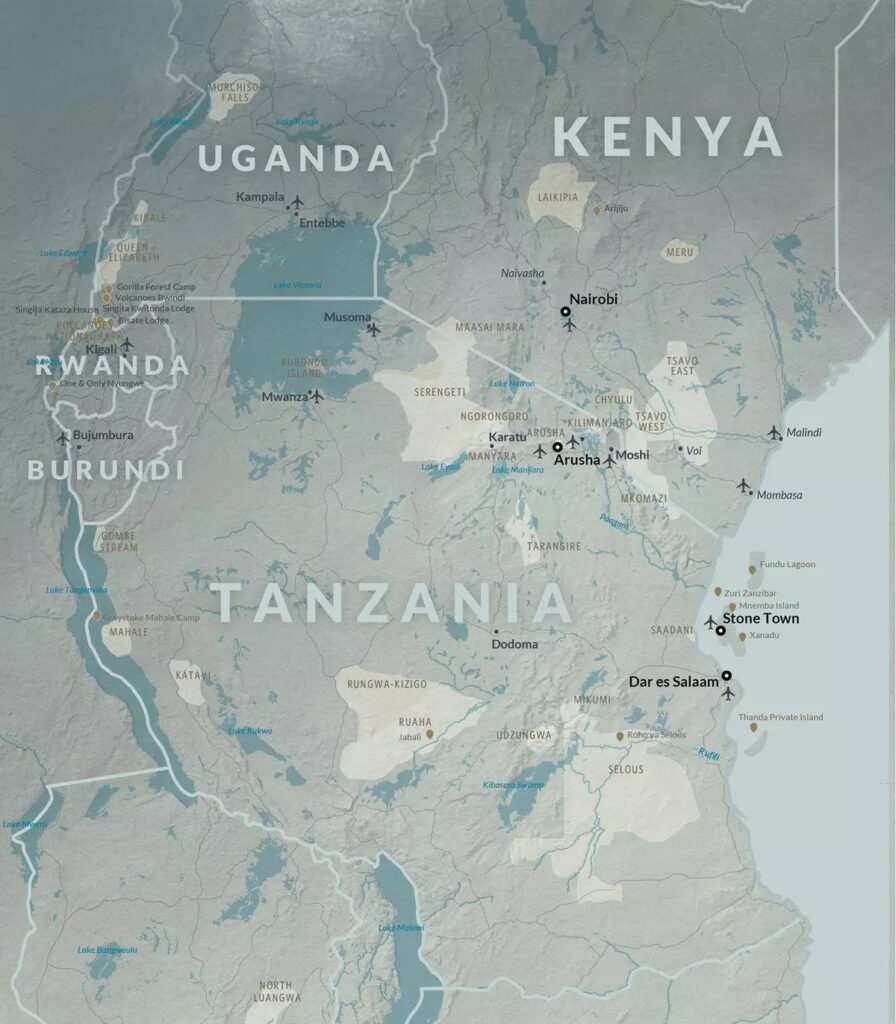
Where is the Masai Mara?
Bordering Tanzania’s Serengeti, the Masai Mara National Reserve lies in southwestern Kenya. This savannah ecosystem is renowned for the annual Great Migration. Masai Mara is an extension of the Serengeti ecosystem, known for its vast grasslands dotted with acacia trees and abundant wildlife, including the Big Five (lion, elephant, buffalo, leopard, and rhinoceros).
The Masai Mara National Reserve features expansive rolling plains dotted with solitary thorn trees and distant purple hills. It evokes the essence of “Out of Africa,” offering breathtaking sunsets. The landscape, shaped by centuries of elephant activity, boasts few trees. Accessing the Masai Mara is straightforward – travelers fly into Nairobi, Kenya’s capital, before catching a light aircraft to one of the reserve’s airstrips.
Where is Serengeti National Park?
Tanzania’s Serengeti National Park is vast, encompassing savannah, woodlands, and the Grumeti River. It’s a central stage for the Great Migration. Serengeti is one of Africa’s most celebrated wildlife reserves, characterized by its sweeping plains, savannah grasslands, and annual Great Migration of millions of wildebeest, zebras, and other herbivores.
The Serengeti National Park spans over 14,763 square kilometers (5,700 square miles) in northern Tanzania. It adjoins the Ngorongoro Conservation Area, housing the renowned Ngorongoro Crater, and borders the Masai Mara National Reserve. The landscape features vast open savannah, tangled woodlands, and rugged hill country, embodying the meaning of “Serengeti” – the land that moves forever. To reach the park, travelers typically fly into Kilimanjaro International Airport and stay overnight in Arusha, the bustling hub serving as the gateway to Tanzania’s Northern Safari Circuit.
Which animals will you see in Bwindi Impenetrable Forest, Masai Mara and Serengeti National Park?
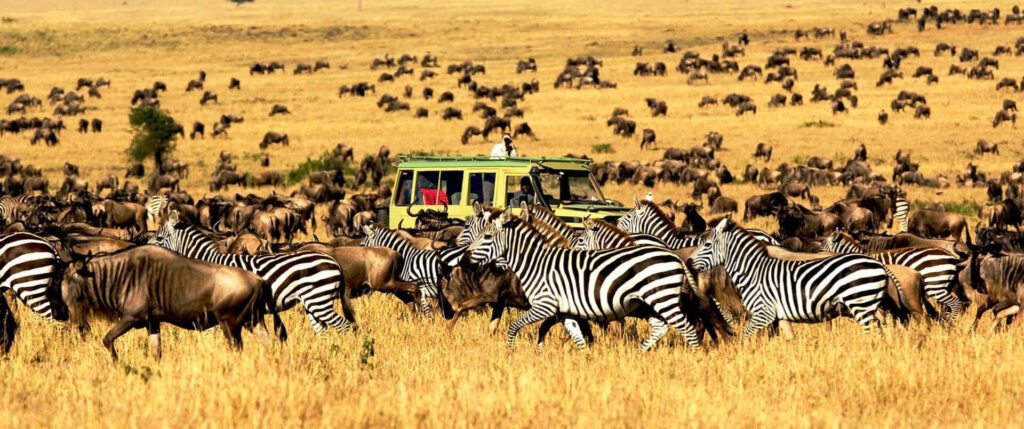
Each destination boasts world-renowned wildlife experiences. In Bwindi impenetrable forest, visitors primarily come to encounter the critically endangered mountain gorillas, which are the main attraction of the park. On the other hand, the Masai Mara and Serengeti jointly host one of nature’s grandest spectacles: the Great Wildebeest Migration, an awe-inspiring event unparalleled in its scale and drama.
Bwindi Impenetrable Forest National Park
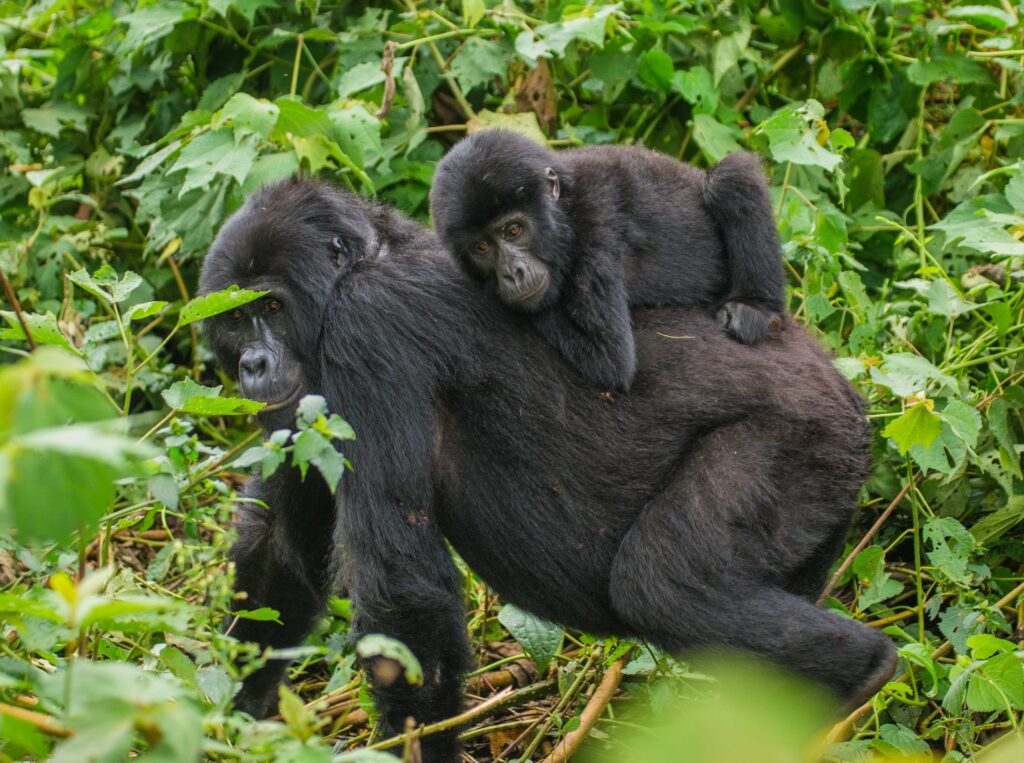
The star attraction is the endangered mountain gorilla. Chimpanzees, black-and-white colobus monkeys, and an incredible diversity of birdlife also inhabit the dense forests. However, besides gorillas, the forest is also home to other primates such as chimpanzees, black-and-white colobus monkeys, L’Hoest’s monkeys, and blue monkeys.
Additionally, Bwindi is rich in birdlife, boasting over 350 bird species, including various Albertine Rift endemics. Other mammals like forest elephants and small antelopes may also be spotted during guided treks within the forest.
Masai Mara
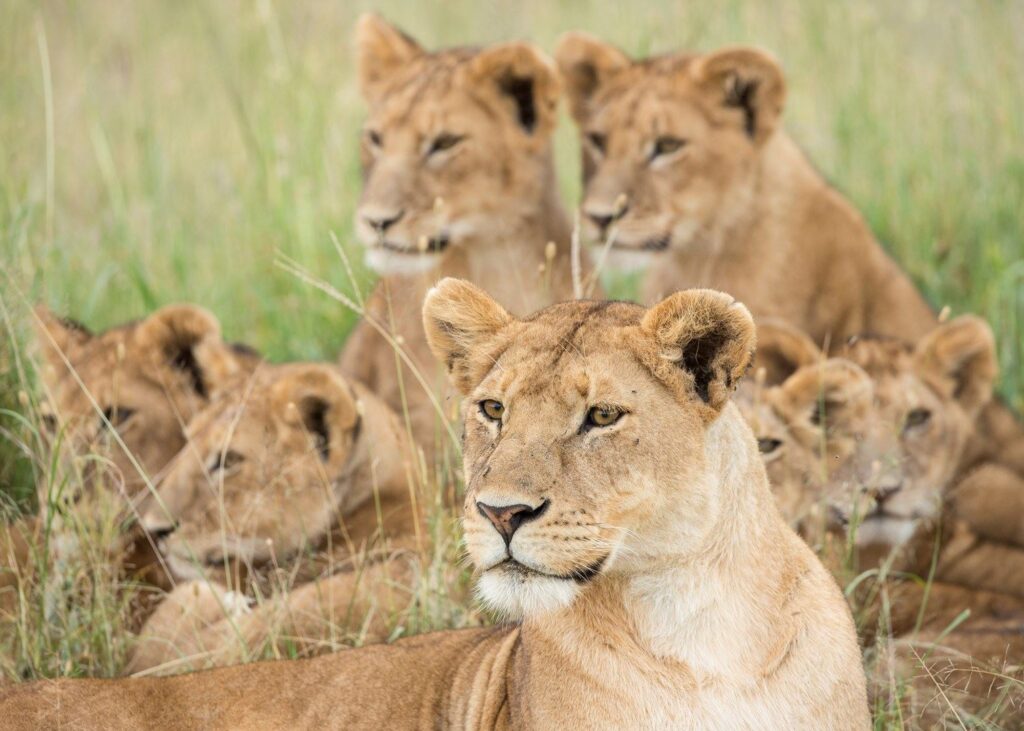
Witness the awe-inspiring wildebeest migration, alongside zebra, gazelle, lions, cheetahs, leopards, elephants, and giraffes. The reserve boasts excellent predator viewing.
In the Masai Mara, spotting lions, elephants, and buffaloes is relatively straightforward, while leopards and rhinos can be more elusive due to the sparse vegetation. Rhinos, in particular, tend to seek shelter in dense brush during colder nights.
Despite this challenge, the Mara’s vast savannahs are teeming with diverse wildlife, making it an excellent destination for observing large herds and their predators. It’s renowned for its abundant lion prides and is one of Africa’s prime locations for cheetah sightings, as the open plains provide ideal hunting grounds for these swift predators. Additionally, the area is inhabited by spotted hyenas, giraffes, and Thomson’s gazelles.
For an extraordinary wildlife experience, visit the Masai Mara from August to October to witness the awe-inspiring Wildebeest Migration. While the national reserve can get crowded during this period, staying in neighboring private conservancies offers a more serene safari experience without compromising proximity to the Migration’s focal points.
Serengeti
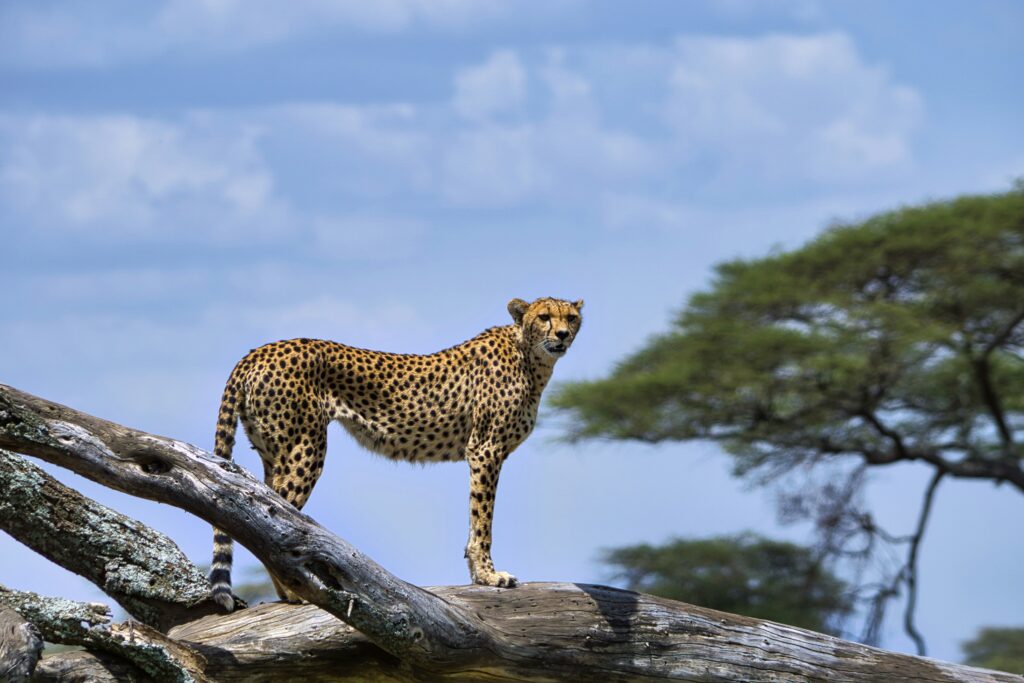
The sheer volume of wildlife is staggering. Witness the Great Migration, with millions of wildebeest and zebra thundering across the plains. Elephants, lions, cheetahs, leopards, and a plenty of birdlife abound.In the Serengeti, akin to the Masai Mara, sightings of lions, buffaloes, and elephants are abundant. Leopards are also observable, particularly around the Seronera River and in the Serengeti’s hilly regions, though rhinos have become increasingly elusive.
The Serengeti’s vast open plains are particularly favored by lion prides.
Renowned for its exceptional general game viewing year-round, the Serengeti rivals the Masai Mara in its reputation for big cat sightings. With a rich diversity of birdlife boasting approximately 500 species, it stands as one of the world’s premier birding destinations.
The Serengeti experiences the bulk of the Wildebeest Migration from November to July, making it a prime location to witness this remarkable natural phenomenon
What Safari Activities can you expect in Bwindi Impenetrable, Masai Mara and Serengeti National Park?
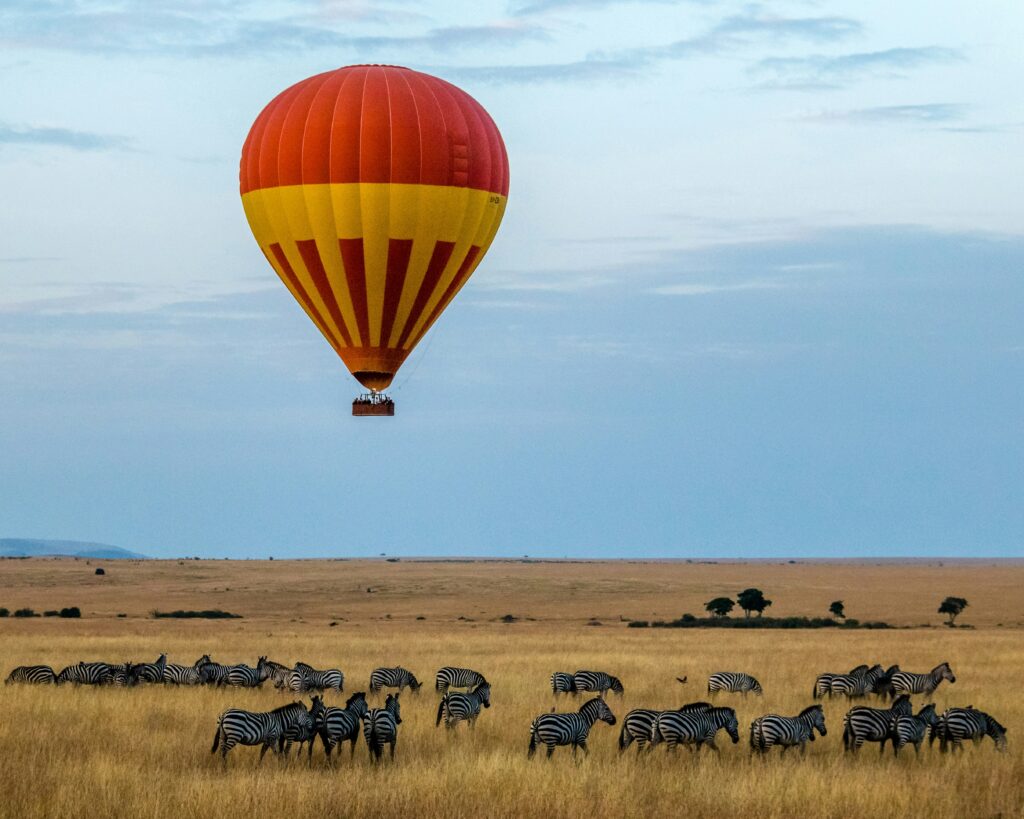
Gorilla Trekking
Morning and Afternoon Game Drives
Night Game Drives
Guided Nature Walks
Hot-air Ballon Safaris
Cultural Tours
Bwindi
Yes
X
X
Yes
X
Yes
Masai Mara
X
Yes
Yes
Yes
Yes
Yes
Serengeti
X
Yes
Yes
Yes
Yes
Yes
Bwindi Impenetrable Forest
Visitors can partake in several safari activities, including:
Gorilla Trekking: The highlight of any visit to Bwindi, gorilla trekking allows you to hike through the dense forest in search of habituated mountain gorilla families. This intimate encounter offers a unique opportunity to observe these magnificent primates in their natural habitat.
Nature Walks: Guided nature walks provide the chance to explore the forest’s diverse flora and fauna, including various bird species and smaller primates like chimpanzees and monkeys. Knowledgeable guides share insights into the forest’s ecosystem and local conservation efforts.
Birdwatching: Bwindi is a birdwatcher’s paradise, boasting over 350 bird species, including numerous Albertine Rift endemics. Guided birdwatching excursions offer the opportunity to spot elusive species like the African green broadbill and the handsome francolin.
Cultural Experiences: Engage with local communities and learn about their traditional way of life through cultural experiences. Visit nearby villages to interact with residents, participate in cultural performances, and gain a deeper understanding of the region’s rich heritage.
Masai Mara and Serengeti National Park
Witness the Great Migration through thrilling game drives. Balloon safaris offer a bird’s-eye view of the vast herds. Guided walks reveal the smaller wonders of the savannah. Off-road game drives offer a unique perspective, while night drives unveil nocturnal predators.
Morning and afternoon game drives in specially equipped vehicles are the primary activities in these destinations. Accompanied by a knowledgeable guide, guests embark on thrilling drives to spot wildlife and gain insights into their behaviors
For guests staying in private safari villas or exclusive lodges, additional activities may include archery, tennis, interactive cooking classes with private chefs, wildlife lectures, photography workshops, guided nature walks and mountain biking.
Bwindi Impenetrable Vs Masai Mara Vs Serengeti: When is the Best Time to Visit?
Choosing the right time to visit Bwindi Impenetrable National park, Serengeti or Masai Mara, is crucial for maximizing your safari experience. Typically, the dry seasons are favored as wildlife sightings are more predictable, the weather is pleasant, and the risk of malaria is minimal. Vegetation is sparse, making animal spotting easier, particularly in the Masai Mara, where animals gather around water sources.
However, timing also impacts costs, with high season safaris being pricier than low season ones. For those aiming to witness the Wildebeest Migration, especially during dramatic events like river crossings, advanced booking and higher costs are necessary, sometimes up to a year in advance.
The less expensive low or Green Season offers its own allure, with lush green landscapes teeming with birdlife and often featuring newborn animals. This season provides opportunities to avoid crowds and capture stunning photographs with vibrant greenery and clear light.
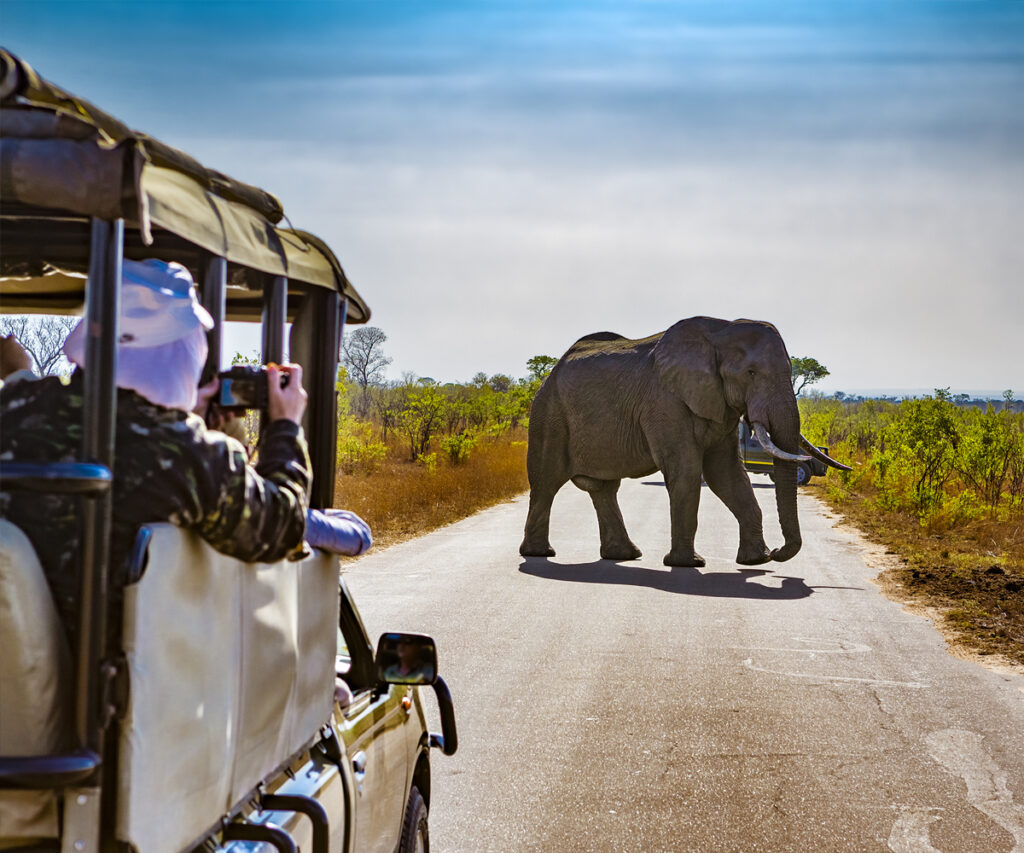
Bwindi Impenetrable
Bwindi experiences cool mornings and nights, with temperatures ranging from 7⁰C to 20⁰C. The coldest period occurs between June and July. The wet seasons span from March to May and September to November, with an annual rainfall total of 2390mm. March to May receives short bursts of rain, while September to November sees heavier rainfall, typically as long periods of gentle drizzle.
Pro tip: the best time to visit Bwindi is June to August and December to Feb
Masai Mara
The Masai Mara offers exceptional safari experiences year-round, thanks to its abundant wildlife and mild climate. It’s important to note two rainy seasons:
The “short” rains in November and December, typically brief but dramatic afternoon showers.
The heavier “long” rains in April and May, during which many camps close due to impassable roads.
The prime time to witness the Wildebeest Migration in the Masai Mara is from August to October. August, in particular, is optimal for observing the dramatic river crossings from the Serengeti into the Mara, where the wildebeests graze until the onset of the short rains in November.
High season (June to October) can be busy, especially around river crossings, so booking well in advance, up to a year ahead, is advisable for preferred accommodations. Staying in one of the Mara’s private conservancies during this time can offer a more secluded experience.
Pro tip: The Masai Mara is also rewarding between January and March, with mild, dry weather and fewer safari crowds present.
Serengeti
Similar to the Masai Mara, the Serengeti offers exceptional safari opportunities year-round, with two distinct rainy seasons: the ‘short’ and ‘long’ rains. Its vast array of wildlife and temperate climate make it accessible throughout the year. During rainy periods, while crowds may thin, wildlife sightings remain abundant.
The Great Migration traverses the Serengeti from November to July, culminating in river crossings into the Masai Mara around August. For thrilling predator encounters, the Migration’s calving season (February to March) is unparalleled, with over 8,000 wildebeest calves born daily. Predators capitalize on this abundance of vulnerable prey, showcasing the raw drama of the circle of life in the southern Serengeti.
What does a safari cost in the Masai Mara, Serengeti, and Bwindi Forest National Park?
Embarking on an African safari entails a significant investment, so selecting the right destination, accommodation, and experience is crucial.
Typically, the more you are willing to invest, the more exclusive and private your safari becomes, enhancing the quality of your wildlife viewing. Exclusivity translates to fewer vehicles tracking the animals, resulting in better sightings. In national parks where visitors can drive their own cars, popular sightings attract large crowds. Conversely, in private areas, the number of game-drive vehicles is restricted, often allowing only two at a time around animal sightings.
Please note that the following costs are approximate guidelines, representing the average per person per night, based on sharing a room during high and low seasons. These figures exclude international flights, visas, and optional activities.
Bwindi Impenetrable
4-Star Comfort 4-Star Luxury 5-Star Luxury
Low High Low High Low High
$1300 – $1550 $1800 $1800 $2,300 $2,400 $2,400 – $3,750
Masai Mara
4-Star Comfort 4-Star Luxury 5-Star Luxury
Low High Low High Low High
$500 – $650 $850 $700 $1,200 $1,200 $1,300 – $1,750
Serengeti
4-Star Comfort 4-Star Luxury 5-Star Luxury
Low High Low High Low High
$500 – $700 $800 $1,000 – $1,300 $1,500 $1,700 $2,200
Here Are The Best Places To Stay In Bwindi Forest, Masai Mara & Serengeti National Park?
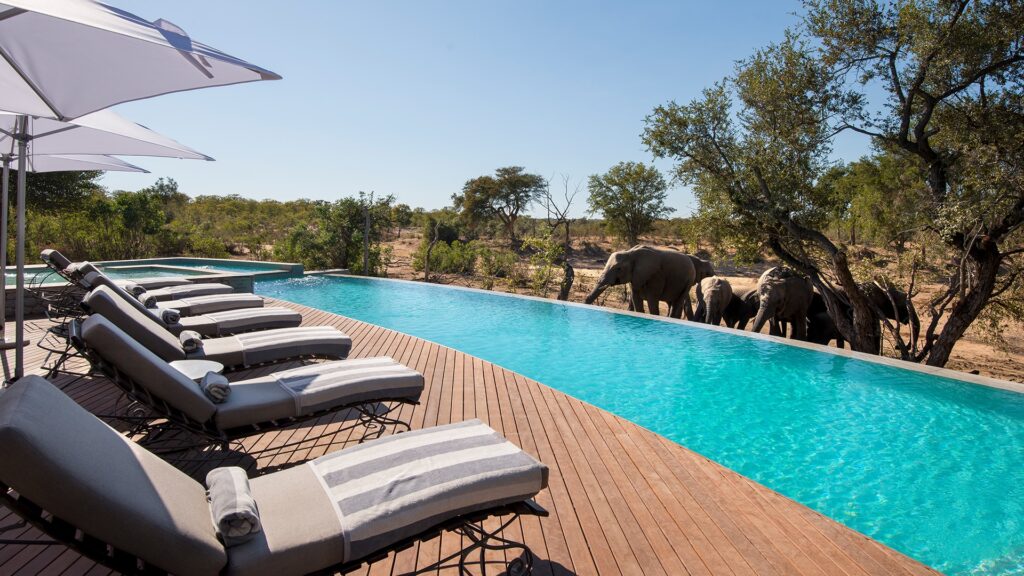
Safari accommodations vary widely, from cozy walk-in tents featuring beds and en suite bathrooms to luxurious villas offering amenities like tennis courts and personalized butler services. During morning and afternoon game drives guided by keen-eyed experts, you’ll have the chance to spot wildlife. Additionally, many lodges boast views overlooking waterholes or rivers, allowing for memorable “armchair safaris.”
Accommodations in these destinations range from spacious, almost resort-like establishments to charming thatched lodges and tented camps adorned with flickering lanterns and traditional bucket showers.
Bwindi
Accommodation in Bwindi Impenetrable Forest National Park ranges from rustic campsites to comfortable lodges and luxury eco-friendly resorts. Visitors can choose from a variety of options based on their preferences and budget.
Some popular accommodations include Buhoma Lodge, Mahogany Springs Lodge, Gorilla Safari Lodge, and Bwindi Lodge. These lodges offer comfortable amenities, delicious meals, and easy access to gorilla trekking starting points. Additionally, there are budget-friendly options like community-run guesthouses and campsites for those seeking a more economical stay while still experiencing the beauty of Bwindi Forest.
Our Favourite Places To Stay
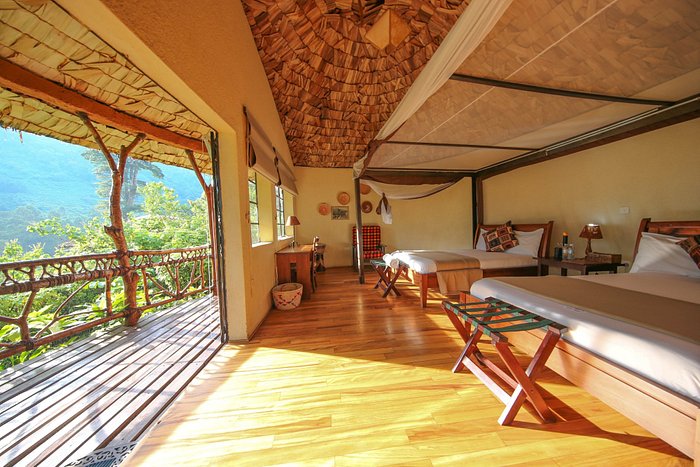

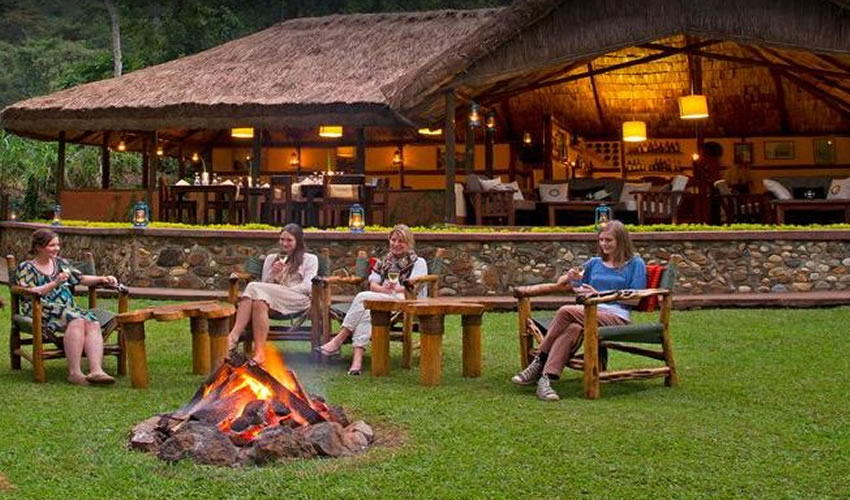
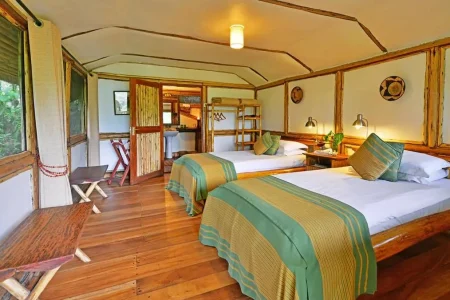
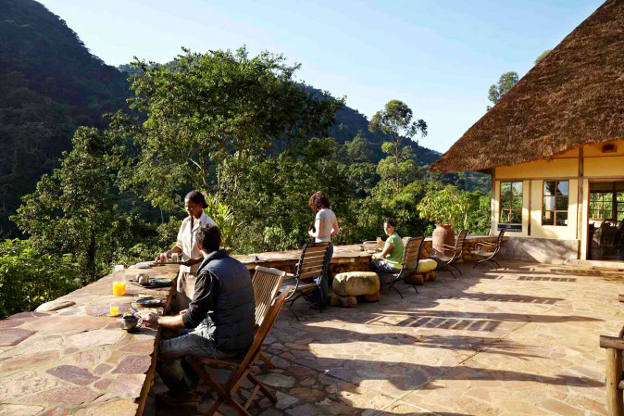
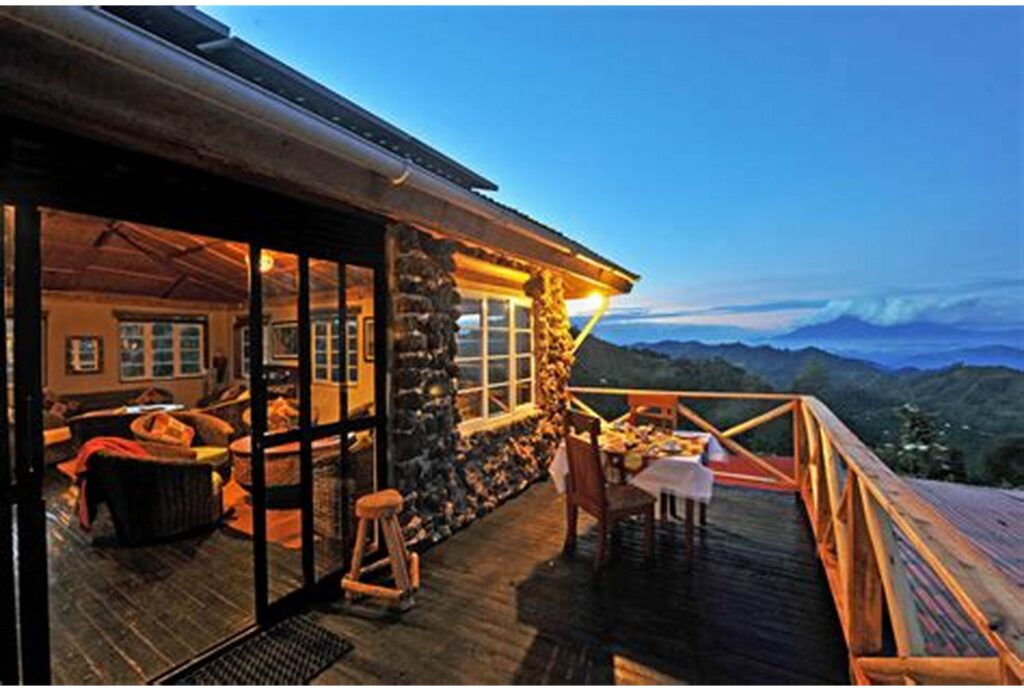
Masai Mara
Accommodation options in the central and eastern Masai Mara vary from tented camps to sprawling resort-style lodges, with high demand during Migration season. For a more exclusive experience, we suggest opting for camps in the reserve’s northern private conservancies.
Here, you’ll enjoy proximity to Migration hotspots while relishing in tranquil surroundings. To secure your spot during the Wildebeest Migration, it’s advisable to book accommodation up to a year in advance.
Luxury tented camps provide a front-row seat to the wildlife spectacle, while permanent lodges offer a more traditional safari experience. Budget campsites are also available.
Our Favourite Places To Stay
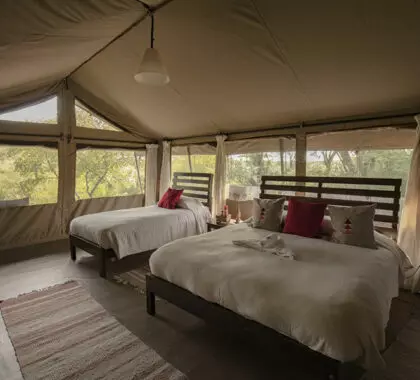
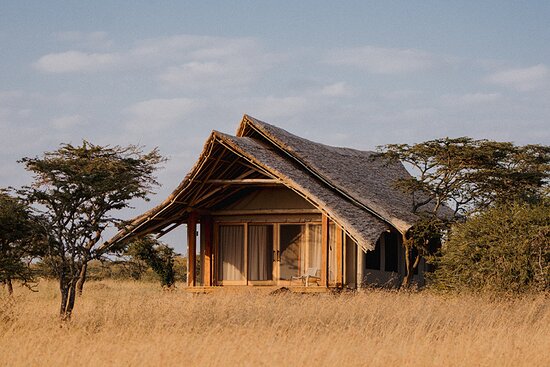
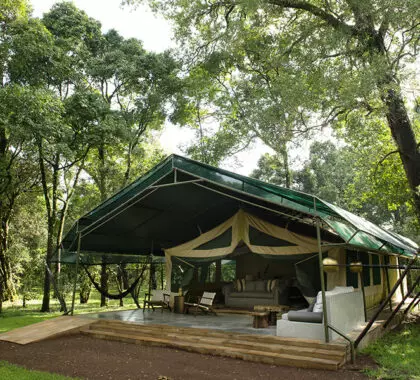
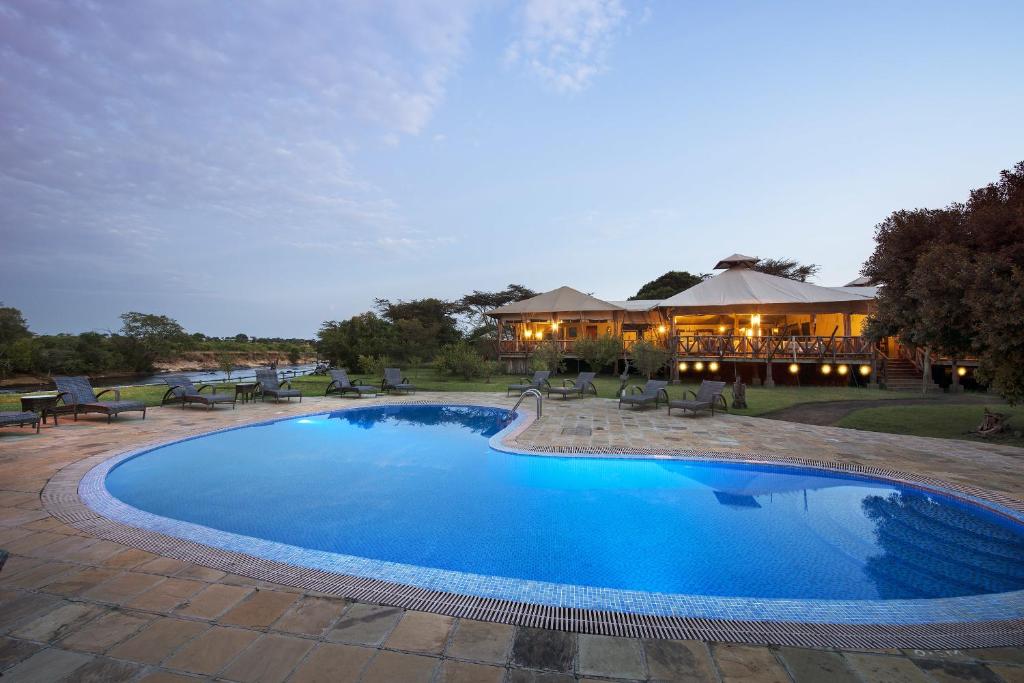
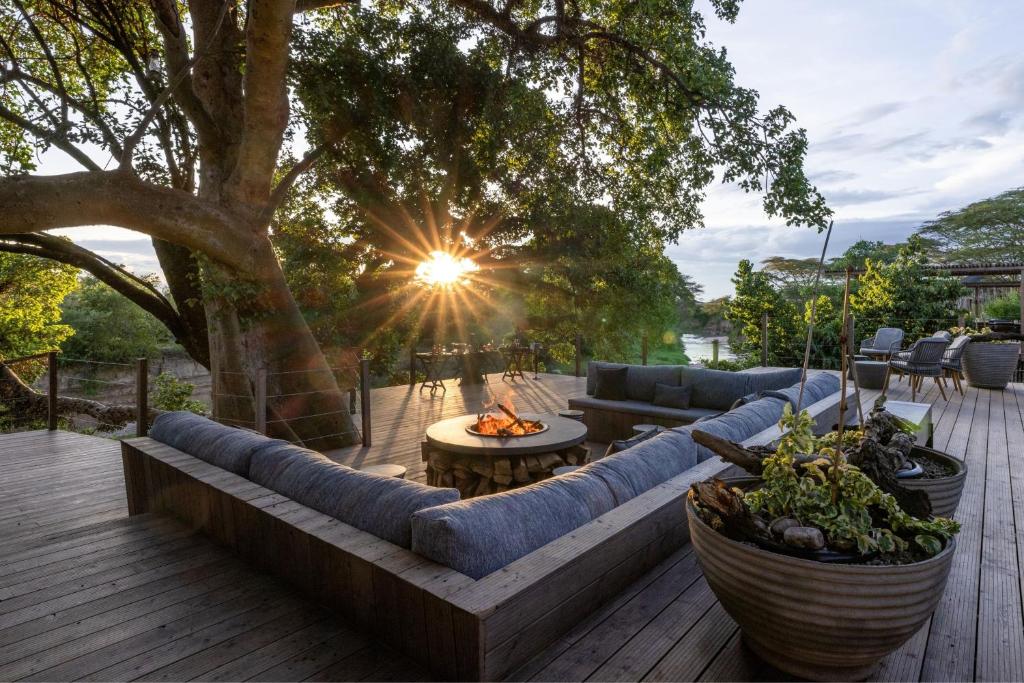
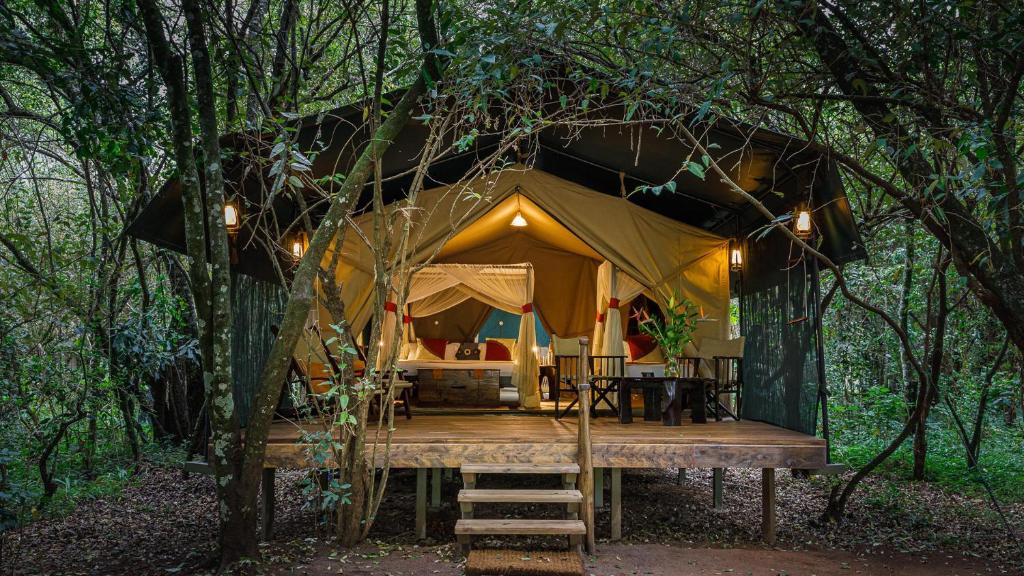
Serengeti
Camps are strategically located along the path of the Migration, so it’s essential to choose the right camp corresponding to the time of year if you wish to witness the wildebeest spectacle. Alternatively, you can select a mobile camp that follows the herds’ movements.
To secure accommodation during the Migration’s significant events, such as the crossings of the Grumeti and Mara Rivers, it’s advisable to book well in advance, sometimes up to a year ahead.
Luxury tented camps offer an immersive experience within the park. Permanent lodges located on the park periphery provide a comfortable base. Budget options include public campsites.
Our Favourite Places To Stay
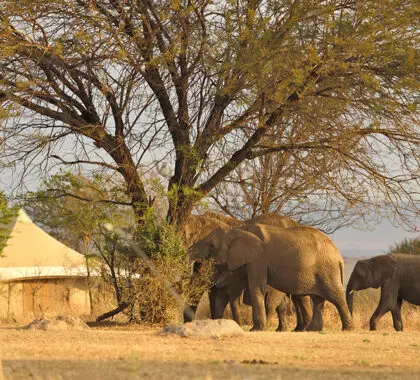
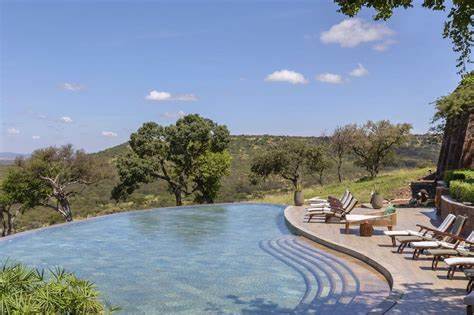
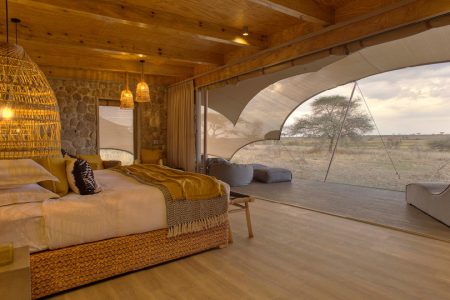
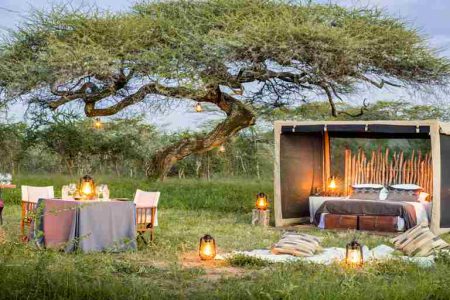
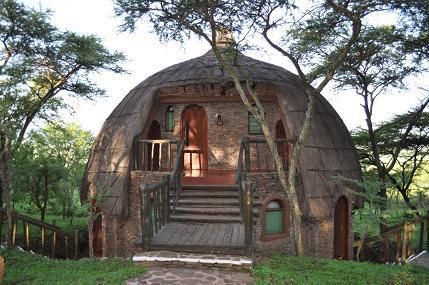

Bwindi Forest Vs Masai Mara Vs Serengeti National Park: Which Traveller Types Are They Best Suited For?
Solo Travellers
Nature enthusiasts
Couples Honeymooners / Celebrating a Special Occasion
Families With Young Children
Families With Older Children
Photographers
Cultural Tourists
Adventure Seekers
Luxury Seekers
Bwindi Impenetrable
Yes
Yes
Yes
X
X
Yes
Yes
Yes
X
Masai Mara
Yes
Yes
Yes
X
Yes
Yes
Yes
Yes
X
Serengeti
Yes
Yes
Yes
X
Yes
Yes
Yes
Yes
X
Bwindi
Bwindi Impenetrable Forest is best suited for travelers seeking immersive encounters with mountain gorillas and those interested in exploring dense tropical rainforests. It’s ideal for nature enthusiasts, wildlife lovers, and adventure seekers looking for a unique and unforgettable experience with one of the world’s most endangered species.
Masai Mara
The Masai Mara is a favored destination among honeymooners and couples, offering iconic landscapes and accessible game viewing, particularly of big cats. It’s an excellent choice for those embarking on their first safari adventure. While family-friendly camps are available, they are better suited for older children rather than very young ones. Additionally, the Masai Mara provides opportunities to immerse oneself in the local Maasai culture, adding a cultural dimension to the safari experience.
Serengeti
The Serengeti, known for hosting dramatic chapters of the Wildebeest Migration and abundant predators, is a haven for photographers. Its intimate camps offer a romantic setting, perfect for couples seeking a memorable getaway. While there are child-friendly accommodations available, the Serengeti is best suited for older children due to its wildlife-rich environment and safari activities.
Which Other Destinations Can Be Combined With The Masai Mara, Serengeti & Bwindi Forest National Park?
Deciding between a safari in the Serengeti, Masai Mara, or Bwindi Forest National Park becomes straightforward if you have the budget and time to explore all three destinations. With efficient logistics and daily flights, combining visits to each park is entirely feasible, offering a comprehensive safari experience.
Moreover, you can enhance your adventure by incorporating additional game reserves, embarking on a unique gorilla trekking expedition, or concluding your journey with a relaxing beach holiday. Safari days can be intense and action-packed, making a seaside retreat with white-sand beaches and impeccable service a perfect finale to your African adventure.
Below are some destinations that can easily complement a safari in the Serengeti, Masai Mara, or Bwindi Forest National Park:
Bwindi
Destinations in Uganda:
Queen Elizabeth National Park
Murchison Falls National Park
Kibale National Park
Lake Mburo National Park
Kidepo Valley National Park
Jinja (River Nile Adventures)
Kalangala Island (Lake Victoria)
Destinations in East Africa:
Masai Mara
Serengeti
Mombasa
Indian Ocean islands:
Zanzibar
The Seychelles
Masai Mara
Destinations in Kenya:
Amboseli
Samburu
Tsavo West
Laikipia
Lewa
Kenya’s beaches (Mombasa, Watamu, Diani, Malindi)
Destinations in East Africa:
Serengeti
Uganda or Rwanda (gorilla trekking)
Indian Ocean islands:
The Seychelles
Zanzibar
Serengeti
Destinations in Tanzania:
Ngorongoro Crater
Tarangire
Lake Manyara
Nyerere National Park (previously Selous)
Ruaha
Destinations in East Africa:
Masai Mara
Uganda or Rwanda (gorilla trekking)
Indian Ocean islands:
Zanzibar
The Seychelles
Bwindi
In addition to gorilla trekking in Bwindi Impenetrable Forest, you can combine various other safaris to create a diverse and enriching experience. Some options include:
Chimpanzee Trekking: Explore Kibale Forest National Park in Uganda for a chance to track habituated chimpanzee troops and observe these fascinating primates in their natural habitat.
Big Five Safari: Visit nearby Queen Elizabeth National Park, home to a diverse range of wildlife, including elephants, lions, leopards, buffaloes, and hippos, for a classic Big Five safari experience.
Volcanoes National Park: Cross the border into Rwanda and embark on a gorilla trekking adventure in Volcanoes National Park, offering a different perspective on these incredible creatures.
Wildlife Safari in Uganda: Explore other Ugandan national parks such as Murchison Falls National Park, Kidepo Valley National Park, or Lake Mburo National Park to encounter a wide array of wildlife, including lions, giraffes, zebras, and more.
Cultural Safari: Immerse yourself in the rich culture and traditions of local communities by visiting villages near Bwindi and participating in cultural activities, such as traditional dances, craft-making, and learning about indigenous lifestyles.
Combining gorilla trekking with other safaris allows you to fully immerse yourself in the diverse landscapes, wildlife, and cultures of East Africa, creating an unforgettable adventure.
Masai Mara
Combining bush and beach experiences is seamless from the Masai Mara. Kenya’s Indian Ocean coast, adorned with idyllic beaches like Diani, Watamu, Malindi, Mombasa and Lamu, offers an array of family resorts and boutique hotels. Conveniently, you can fly from the Masai Mara straight to Mombasa to access these coastal destinations.
Furthermore, consider adding another safari destination within Kenya. Samburu or Amboseli are highly recommended for their distinctiveness compared to the Mara. Alternatively, explore the Laikipia region and Lewa Wildlife Conservancy for more exclusive game-viewing opportunities. Lewa, in particular, stands out as one of East Africa’s premier destinations for rhino sightings.
Serengeti
The Serengeti lies at the core of Tanzania’s convenient Northern Safari Circuit, which encompasses renowned destinations like the Ngorongoro Crater, Tarangire National Park, and Lake Manyara.
For a natural bush-and-beach holiday blend, consider pairing the Serengeti with the Indian Ocean island of Zanzibar. Alternatively, opt for a more unconventional combination. Embark on a chimpanzee trekking adventure in the mystical Mahale Mountains, or delve into the untamed wilderness of Nyerere National Park (formerly Selous) via 4×4, on foot, and by boat. With only about 1% of Tanzania’s safari visitors, Nyerere offers secluded wildlife sightings, often with no other vehicles in sight.
Ready To Plan Your Masai Mara, Serengeti Or Bwindi Impenetrable Forest National Park Safari?
Chat with someone who’s been there. Get in touch with one of our Africa Safari Experts to help tailor-make a trip that’s right for you:
